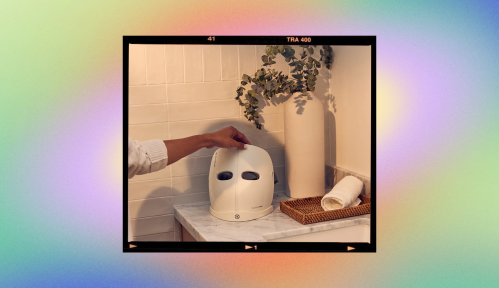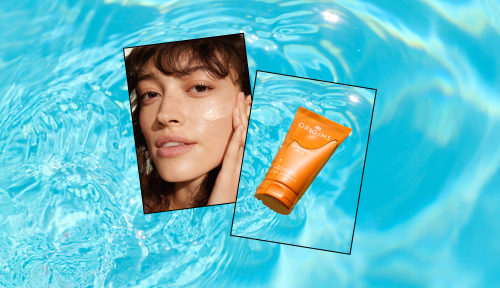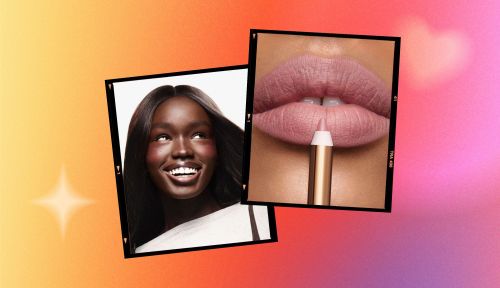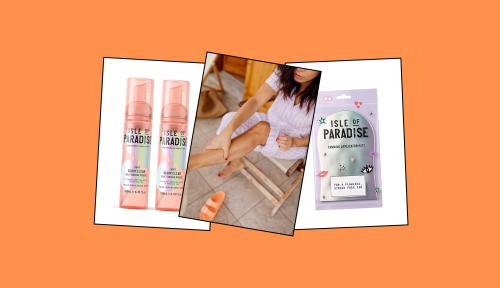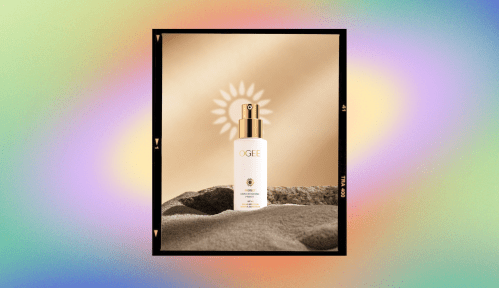Our editors independently select these products. Making a purchase through our links may earn Well+Good a commission
The 12 Best Hair Oils for Dry Hair, According to Experts
Learn how to pick the best tested and reviewed oil for hair that's dry, fine, thin, curly, or damaged, according to expert hairstylists.
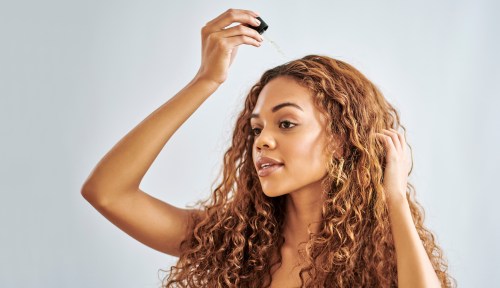
It would be great if moisturizing dry hair were as simple as finding the perfect shampoo and conditioner, but that isn’t quite the case. Providing hair with the moisture it needs is a multi-step process requiring a lot of hydration in both the shower and your styling routine. That said, one product should be considered a non-negotiable because it makes all that work go even further—and that’s a hair oil for dry hair.
How do hair oils help in moisturizing dry hair?
Several factors can cause hair to become dry. Heat styling, chemical treatments, sun damage, and hard water can strip the hair of its natural oils, which is where topical hair oils help.
“Oils have fatty acids that help replace lipids—and in some cases, keratin—in the hair’s cortex,” says Gretchen Friese, a trichologist with BosleyMD. What’s great about most hair oils is that they give instant gratification, making your hair appear healthier while delivering long-term hydrating benefits. “Oils work as a topical moisturizer, so for anyone needing a quick fix, putting some on your hands and running it through your ends will soften any dryness and add a ton of shine,” says Rae Ann Cotto, a stylist at The Team Salon in New York City. “They’re a quick and easy way to keep hair shiny and smooth.”
That said, hair oils are only one part of a multi-step hair hydration routine. The process should start in the shower with a hydrating shampoo and conditioner combo, followed by moisturizing creams or styling products. Then, you can use your oil as the final step to seal in all those ingredients.
Are there specific natural oils recommended for dry hair?
There are tons of hair oils for dry hair, most of which are made from a blend of different naturally derived ingredients to deliver maximum results. A few pros recommend looking for on your labels:
Almond oil
According to Joshua Zeichner, MD, a board-certified dermatologist based in New York City, almond oil contains omega-3 fatty acids, phospholipids, vitamins A, D, and E, and magnesium—all of which work together to strengthen and nourish your hair. Because of its small molecular size, almond oil can easily penetrate strands for deep hydration.
Argan oil
Often referred to as “liquid gold” for hair, argan oil has been a mainstay in Moroccan beauty routines for centuries (and in the last few decades, has made its way into the international beauty lexicon). It’s packed with vitamins (namely A, C, and E), antioxidants, and fatty acids, and can help with hair growth, detangling, and dry scalps. “One hundred percent pure argan oil works beyond the surface by hydrating and nourishing deep down for healthier hair from the inside out,” says Josie Maran, whose eponymous beauty line heroes the ingredient. “Feeding each strand with essential nutrients keeps hair looking shinier, stronger, and better-looking.”
Jojoba oil
Jojoba oil is a mainstay in some of the best hair oils on the market because it doesn’t just hydrate your hair—it helps keep it balanced. Its molecular structure closely mimics that of the natural oils produced in your scalp, which allows it to penetrate the hair shaft to provide moisture that feels like it’s meant to be there (AKA never greasy or heavy). It also contains vitamin E, a vitamin B complex, zinc, and copper, which boost the appearance of shine and smoothness in the hair.
Coconut oil
Thanks to the fact that coconut oil is jam-packed with fatty acids, it’s a great option for softening and hydrating strands. However, Cotto cautions that it may not be the best bet for everyone (particularly those with fine or thin hair), as it can be heavier and difficult to wash out.
What are occlusive oils?
You may have heard of occlusive ingredients which, in the context of skin, are designed to lock in moisture. But occlusives are equally important when it comes to hydrating your hair.
According to our experts, occlusives create a barrier that locks moisture in, creating healthier hair over time. The good news? Pretty much every oil on the market (and, certainly, each one on this list) acts as an occlusive.
To make the most out of your hair routine, you’ll want to start with a shampoo/conditioner combo that contains humectants (AKA ingredients that draw moisture into the strand, like hyaluronic acid) and emollients (AKA softening ingredients, like vitamin E), then lock it all in with an occlusive oil.
How to choose the right hair oil for dry hair
If your hair has ever felt greasy, stiff, or gross after using a hair oil, you know that all of them aren’t created equally, which our pros say is totally dependent on the porosity of your hair.
Hair porosity refers to the condition of your hair’s outer layer (AKA the cuticle), which determines how well it can hold onto a substance (like an oil). On low porosity hair—typically straight-to-wavy, dense, and takes longer to dry—the “scales” on the hair cuticle lay flat and close together, making it more difficult for an oil to penetrate the strand. High porosity hair, on the other hand, tends to be coily (with more open pores for product to go through) and may absorb moisture, but it isn’t as good at holding onto it.
With that in mind, you’ll want to choose your hair oil based on its porosity (which you can determine using this easy test). “You don’t want to use really heavy oils on fine [low porosity] hair—I would recommend using more of a serum to avoid a weighed-down, greasy look,” says Friese. Meanwhile, textured hair may prefer a heavier oil.”
Can hair oil treatments improve dry scalp conditions?
While most hair oils are explicitly designed to add shine to dry lengths, there are some formulas out there that treat dry scalps, too. “There are many natural oils that are great for the scalp and hair, including baobab, ylang-ylang, jojoba, rosemary, and lavender oils,” says Dominic Burg, PhD, trichologist and chief scientist at Evolis Professional. “These all work to increase hydration of the strands and moisturize the scalp.”
How often should hair oil be applied to dry hair?
There’s no one-size-fits-all answer to how (and how often) you should be using hair oil on dry hair—it’s all about understanding your needs and figuring out what works with your routine. Generally, once or twice a week should deliver solid results.
“The lightest and easiest way to use oil on dry hair is either after a blowout or before a flat or curling iron,” says Cotto. Some people use oil as a heat protectant pre-blowout, but it doesn’t offer enough protection—it’s more ideal as a polisher post-heat styling.” You can also use your oil as a pre-wash treatment (apply it to your hair overnight or a few hours before washing) or as needed to infuse your strands with a little extra shine.
What are the best hair oils for dry hair?

Best drugstore hair oil: Garnier Fructis, Sleek & Shine Moroccan Sleek — $8.00
Key ingredients: Argan oil, vitamin E
Hair types: Frizzy, dry
Argan oil and vitamin E in this bottle makes for a shine-enhancing formula that feels like it should cost a whole lot more than $7. If your hair is super dry, try applying it to damp hair and you’ll look like you’re in a Garnier commercial (well, minus the profesh photographer and lighting) once you’re done blowdrying.
Size: 3.8 oz.
Pros:
- Lightweight
- Leaves hair silky and shiny
- Affordable
Cons:
- Won’t help with static
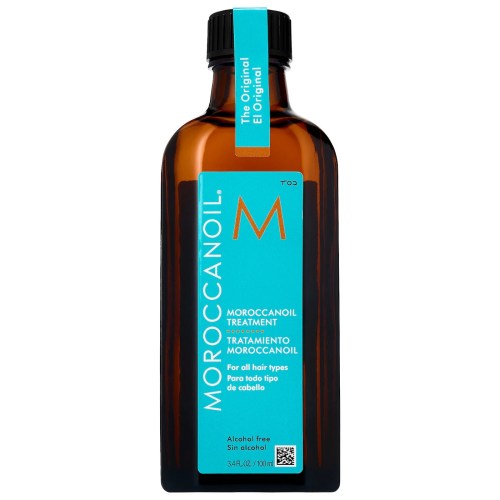
Best hair oil for dry, thick hair: Moroccanoil, Treatment Hair Oil — $48.00
Key ingredients: Argan oil, linseed extract
Hair types: Dry, medium/thick
Moroccan people have been using argan oil to hydrate their hair for centuries, and when Moroccanoil hit shelves in 2008, it introduced the rest of the world to their secret. In this bottle, a blend of argan oil and linseed oil nourishes, hydrates, and protects strands, and the formula can be used as a treatment on wet hair to increase softness or on dry hair to add an instant shine.
Size: 3.4 oz.
Pros:
- Hydrates, softens, and protects hair
- Adds instant shine
- Smells amazing
- Works equally well on wet and dry hair
Cons:
- May be too heavy for finer hair types
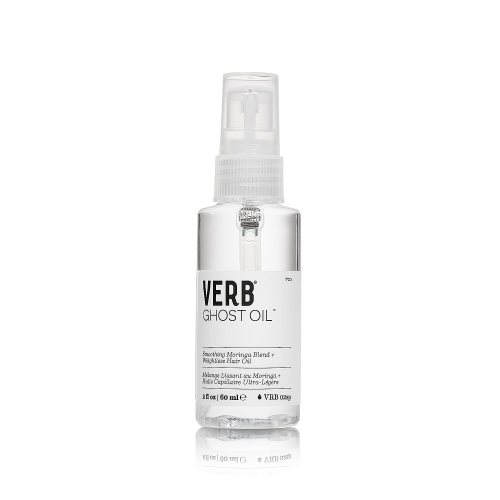
Best hair oil for fine, dry hair: Verb, Ghost Oil — $19.00
Key ingredients: Moringa oil
Hair types: Dry, fine, frizzy
“Ghost” is an accurate descriptor for this oil, because it’s so lightweight you’ll swear you’re wearing nothing at all—even on fine, thin hair. It gets its powers from moringa oil, which is packed with vitamins A, E, and C, as well as omegas 3, 6, and 9, and absorbs seamlessly into hair. What’s more, its subtle grapefruit scent and the intense shine it leaves behind will make your at-home blowout look like it was done in the salon.
Size: 2 oz.
Pros:
- Lightweight
- Fights frizz
- Adds shine
- Subtle grapefruit scent
Cons:
- A little goes a long way—too much product may feel heavy in hair
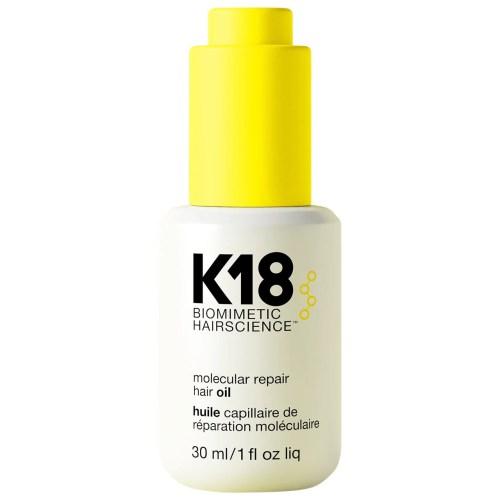
Best hair oil for dry, color-treated hair: K18, Biomimetic Hairscience Molecular Repair Hair Oil — $65.00
Key ingredients: K18peptide, hemisqualane, squalane, avocado oil, sunflower oil
Hair types: Dry, damaged, color-treated
Celebs—including Selena Gomez and Hailey Bieber—swear by K18’s products for keeping their color-treated hair healthy, and this oil is no exception. It has polypeptides which work to strengthen hair from the inside out. While that’s going on beneath the surface, squalene, avocado oil, and sunflower oil work on top of the strand to smooth flyaways and enhance shine.
Size: 1 oz.
Pros:
- Reverses hair damage
- Hydrates, tames frizz, strengthens and softens hair, improves shine
- Works as a heat protectant
Cons:
- Has a strong smell
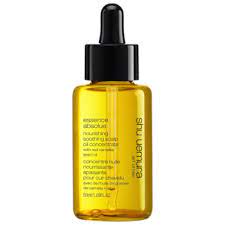
Best treatment hair oil for dry hair: Shu Uemura, Essence Absolue Pre-Shampoo & Nourishing Treatment Oil — $52.00
Key ingredients: Japanese red camellia oil
Hair types: Dry
Five minutes is all you need to reap the benefits of this pre-shampoo treatment, which will coat your scalp and strands with moisture. It has red camelia oil sourced from Japan—which is rich in antioxidants, lipids, and vitamins A, C, and E—to boost hair hydration, health, and shine. It feels thick when it comes out of the bottle, but not to worry: Because it’s a rinse-out treatment, you won’t have to worry about it greasing up or weighing down your strands after using it.
Size: 1.7 oz.
Pros:
- Hydrates, softens, and protects scalp and strands
- Fragranced with vanilla, musk, and orange
- Works in five minutes
Cons:
- Scent may be too strong for some people

Best hair oil for natural hair: PATTERN by Tracee Ellis Ross, Jojoba Hair & Scalp Oil Blend — $28.00
Key ingredients: Jojoba oil, lavender oil, safflower oil
Hair types: Dry, curly, coily
Curly hair, by nature, has a tough time staying hydrated because its natural oils tend to get trapped around the scalp (it’s much easier for sebum to work its way down straight strands than it is to navigate around coils). This product was designed specifically to help balance out the situation. The lightweight formula, which heroes jojoba oil, is meant to be massaged into the hair and helps prevent flaking and itching at the scalp (which can happen as a result of all that trapped sebum) while restoring softness to the strands and locking in moisture all over)
Size: 3.9 oz.
Pros:
- Hydrates and softens strands
- Prevents itching and flaking at the scalp
- Designed specifically for curly and coily hair concerns
Cons:
- May be too heavy for fine or thin hair textures
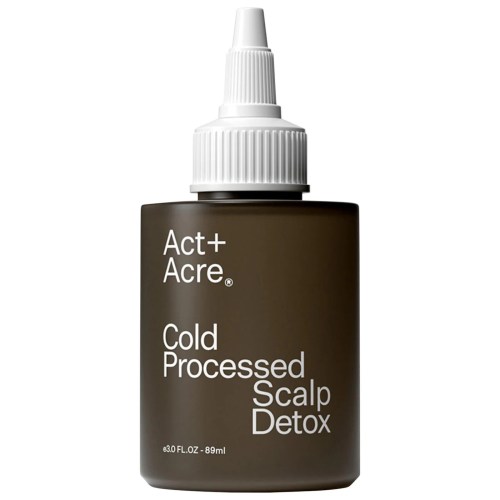
Best hair oil for dry scalp: Act+Acre, Cold Processed Scalp Detox Oil For Dry Scalp — $48.00
Key ingredients: Basil leaf hairy root blend, sunflower oil, baobab oil
Hair types: Dry scalp
Apply this oil and let it sit for 20 minutes before you shampoo, and you’ll be shocked at how soothed your dry scalp will feel the minute you step out of the shower. That’s thanks to a combination of three powerhouse ingredients: Sunflower oil, which breaks down buildup to improve the health of your scalp microbiome; basil leaf root blend, which balances the scalp skin; and baobab oil, which infuses skin and hair with moisture. Don’t believe us? In a four-week consumer perception study, 89 percent of testers reported that their scalp felt less dry and itchy after a single use.
Size: 3 oz.
Pros:
- Moisturizes dry scalp and strands
- Prevents itching and flaking
- Noticeable results after one use.
Cons:
- You really need to wash thoroughly with shampoo to ensure all the product is removed
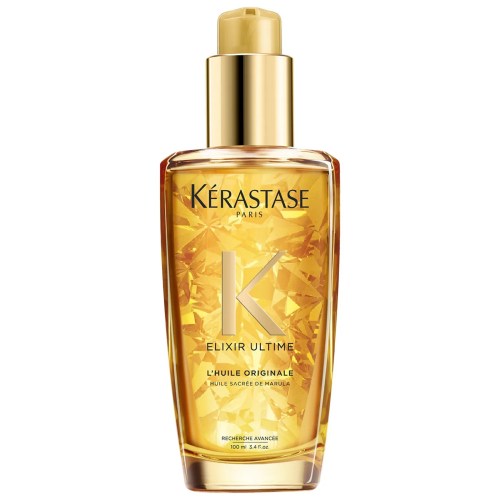
Best luxury hair oil for dry hair: Kérastase, Elixir Ultime Hydrating Hair Oil Serum — $58.00
Key ingredients: Marula oil, argan oil, camellia oil
Hair types: All
Argan oil is a hair hydration hero ingredient all on its own—but this formula takes things to the next level by pairing it with camellia and marula oils, which each bring their own hydrating and softening benefits. These three superstars offer the antioxidant-protective and moisture-enhancing benefits of vitamin E, and leave hair shiny, smooth, and less prone to breakage—so much so that women from their 20s to their 60s seriously swear by it.
Size: 3.4 oz.
Pros:
- Contains three antioxidant-rich oils
- Enhances shine and softness while preventing breakage
- Extremely lightweight
Cons:
- Expensive

Best hair oil for growth: Mielle, Rosemary Mint Growth Oil — $9.00
Key ingredients: Rosemary, mint, biotin, grapeseed oil, sweet almond oil, and jojoba oil
Hair types: Dry, thinning
This product gets its density-boosting abilities from rosemary and mint, which stimulate circulation to the scalp to create an optimal environment for hair growth. The addition of biotin, sweet almond oil, and jojoba oil help to ensure that new hair is not only growing, but that it’s also coming in as the healthiest version of itself.
Size: 4.23 oz.
Pros:
- Boosts scalp circulation to stimulate hair growth
- Softens strands and promotes shine
- Improves scalp health
Cons:
- May take up to 2 months to see results
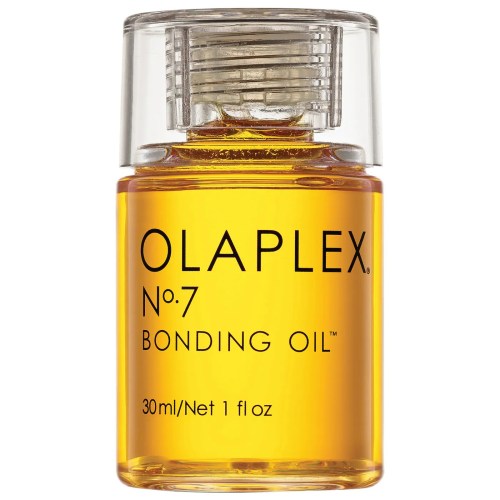
Best hair oil for dry, damaged hair: Olaplex, No. 7 Bonding Hair Oil — $30.00
Key ingredients: Olaplex’s patented bond-building ingredient, sunflower seed oil, moringa seed oil, fermented green tea oil
Hair types: Dry, damaged
Olalpex is known for its bond-restoring products, but unlike the brand’s shampoos/conditioners/pre-wash treatments, this formula is meant to stay on strands (instead of being rinsed out) so it works long after you leave the shower. It’s made with Olaplex’s patented bond-building ingredient that finds broken bonds within hair strands and links them back together. The ultra-lightweight formula leaves strands soft, shiny, and strong, and offers heat protection that makes it perfect to apply before an at-home blowout.
Size: 1 oz.
Pros:
- Hydrates dry hair while repairing damage
- Offers heat protection
- Feels weightless and smooth on strands
Pros:
- Best used as a treatment on wet hair (versus as a styling or shine-enhancing product on dry hair)

Best hair oil for shine: Oribe, Gold Lust Nourishing Hair Oil — $59.00
Key ingredients: Argan oil, jasmine oil, sandalwood extract, amur cork tree bark extract, barley extract, Oribe signature complex
Hair types: Dry, dull
While all of the oils on this list will give your hair a little extra shine, this one delivers nothing short of a mirror finish thanks to a combination of argan and jasmine oils. In addition, a blend of sandalwood, amur cork tree bark, and barley extracts helps to boost moisture and repair the hair cuticle (including split ends). Bonus: It also defends against environmental damage (from things like heat, UV, and pollution) to prevent visible signs of hair aging.
Size: 3.4 oz.
Pros:
- Gives intense shine
- Hydrates and smooths hair, reduces frizz, smooths split ends
- Prevents visible signs of hair aging, including color fading and keratin damage
Cons:
- Expensive
- May feel heavy on fine or thin textures
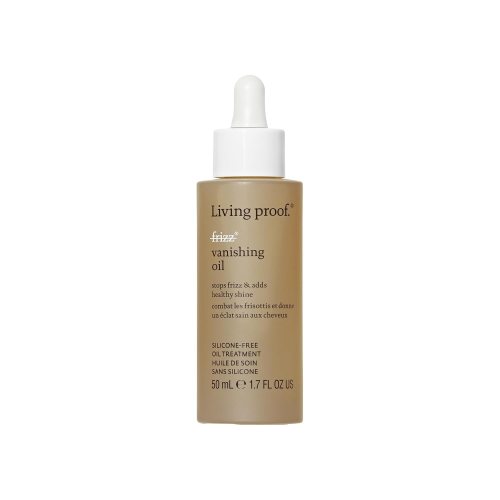
Best hair oil for dry, frizzy hair: Living Proof, No Frizz Vanishing Oil — $33.00
Key ingredients: Amaranth seed extract, hemisqualane
Hair types: Dry, frizz-prone
Dryness and frizz go hand in hand (when hair is dry, it tries to balance itself out by drawing in moisture from the environment, which can create frizz), and this formula addresses both concerns at the same time. The amaranth seed extract in the oil blocks humidity and boosts the lipids in your hair to smooth frizz, while a blend of oils and hemisqualane make hair look (and feel!) healthier and shinier.
Size: 1.7 oz.
Pros:
- Hydrates hair and protects against frizz
- Lightweight
- Reduces static
Cons:
- Too much product can make hair look flat

